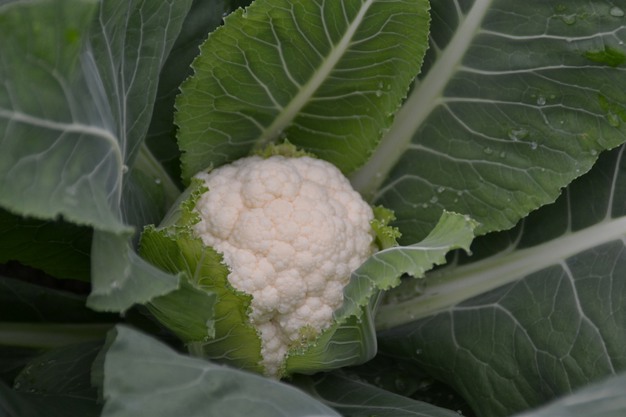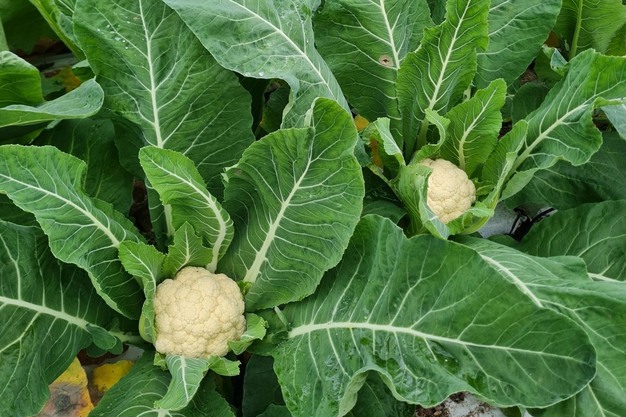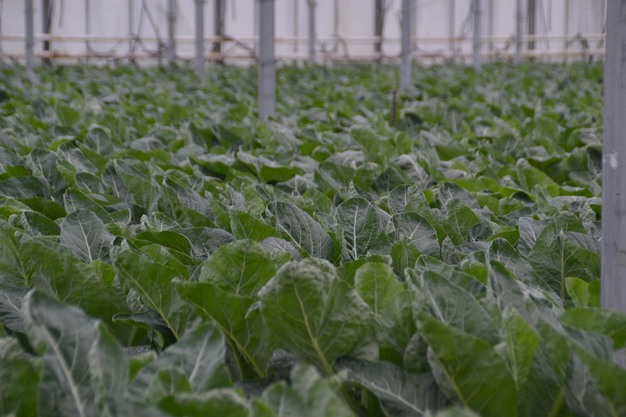In the Netherlands and Belgium, growers were still harvesting cauliflower well into November and December due to a relatively warm fall. The current frost will put an end to that, leaving greenhouse growers to provide BelOrta with cauliflower for the coming weeks. Despite, or perhaps because of, the energy crisis, there are still many of these growers. "We still have dozens supplying greenhouse cauliflower," begins Guy Jennes, Vegetable Sales Supervisor at the Flemish cooperative.
Cauliflower, a low-energy crop, remains popular among some growers, he notes. "The recent rising cost of energy means growers were looking for low-energy crops." Guy also points out an increase in Dutch and Belgian growers' average age. "Our greenhouse cauliflower growers have vast experience in vegetable cultivation, so they often boast a wealth of knowledge and craftsmanship. That only contributes to our product's top quality," he says.

Delicacy
Most growers cultivate greenhouse cauliflower in soil. Some, nowadays more often than before, grow them on a substrate. A West Flemish cucumber grower who supplies BelOrta recently shared a photo of this on LinkedIn. Guy also knows of a green bean grower who cultivates greenhouse cauliflower in winter on the same substrate as the green beans.
Once they arrive at BelOrta, the cultivation method is irrelevant for sales. Greenhouse cauliflower is just that and clearly differs from other supplies. The product is more delicate and has a shorter cooking time. It is supplied from early December to mid or late April. The earliest greenhouse cauliflower growers meet the Christmas demand. "We then refer to early cauliflower, with six fitting in a tomato crate."

Greenhouse cauliflower at BelOrta grower Vandogro. Photo via LinkedIn
Unique position
This fall, some BelOrta growers had a long open-field cultivation season. "The warm weather benefitted certain growers well. They could supply large volumes of outdoor cauliflower for a long time," Guy explains. Prices were good, too. "Supply from France and Spain affected fall prices most. Our auction clock reacts to that supply. Spain was on the market later, and France finished earlier. The gap that arose benefited Dutch and Belgian growers."
Local greenhouse growers can now start profiting from their unique position. Until about late February, they are the only ones supplying local cauliflower. From then on, BelOrta will add what is called winter cauliflower. "And a month later, regular open-field production also starts," says Jennes.

Toughest period
Despite the advantage of the greenhouse, growing cauliflower in these weeks is not an easy task, Guy knows. "This is the toughest period with little light and low temperatures. Not all greenhouse cauliflower growers are in production yet. At present, we're mainly receiving the six heads in a tomato crate."
"Prices have been good since the start of the greenhouse cauliflower season. In mid-February, we often see eight pieces in a medium crate and, a little later, six pieces in a large crate. As with many crops, growers prefer to be either the first or the last on the market," Guy concludes.
For more information:
Guy Jennes
BelOrta
guy.jennes@belorta.be
www.belorta.be
